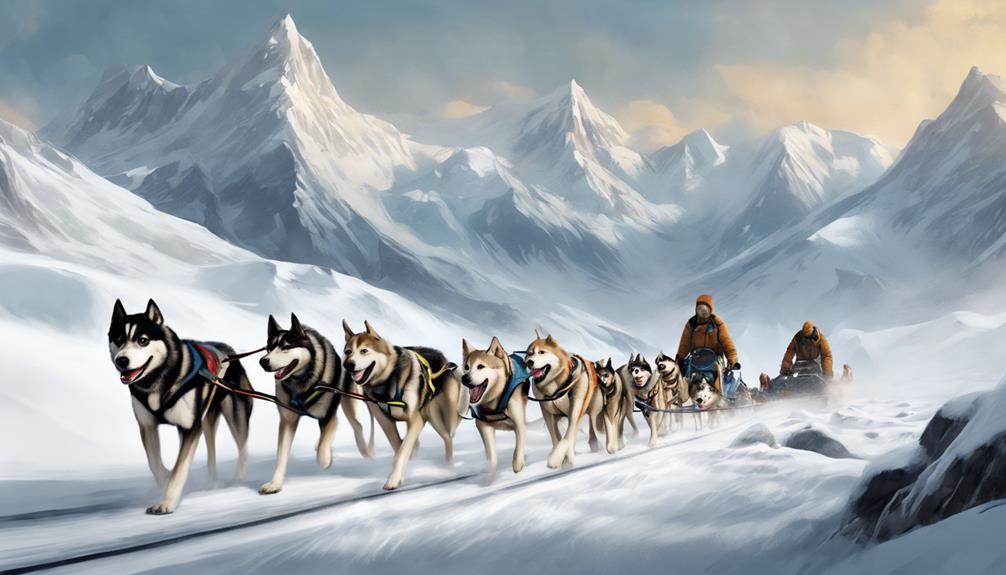Animals have long been integral to exploration endeavors, offering unique capabilities that complement human efforts. From aiding in search and rescue missions to providing emotional support for explorers, the contributions of animals in various exploration contexts are multifaceted and significant. As we delve into the ways animals assist in exploration, it becomes evident that their innate abilities and specialized skills open up possibilities that go beyond the realms of human capacity. In considering the future prospects of animals in exploration, a deeper understanding of their role may unveil untapped potential yet to be fully realized.
Key Takeaways
- Animals contribute to understanding space travel effects and testing conditions for human safety.
- Animal senses aid in navigation and communication strategies for exploration.
- Animals in transportation provide endurance, agility, and reduce reliance on mechanical vehicles.
- Animals play a crucial role in search and rescue operations, enhancing success rates and efficiency.
Historical Role of Animals in Exploration

Animals have played a pivotal role in the historical exploration of space, serving as pioneering participants in early scientific missions that paved the way for human endeavors beyond Earth's boundaries. Both the Soviet and American space programs recognized the importance of using animal astronauts to understand the effects of space travel on living organisms. Laika, the Soviet space dog, was the first living being to orbit the Earth aboard Sputnik 2 in 1957. Following this historical flight, American missions like Mercury and Apollo also included animal astronauts such as Ham the chimpanzee, to test the conditions of space travel before risking human lives.
In the early days of space exploration, a variety of animals including monkeys, mice, dogs, and even a rabbit were sent into space for scientific research purposes. These animal pioneers provided valuable data on the physiological and biological effects of space travel, contributing significantly to our understanding of the challenges faced by living organisms in the space environment. Such early experiments laid the foundation for future human space exploration endeavors.
Navigational Assistance From Animal Companions
Animals possess remarkable sensory abilities and instinctual pathfinding skills that can be harnessed for navigational assistance in space exploration. From birds sensing magnetic fields to dogs detecting specific scents, these natural talents offer unique advantages for orienting and mapping in unfamiliar environments. Studying animal behavior in microgravity settings could inspire innovative approaches for enhancing navigation systems in future space missions.
Animal Senses Aid
In the realm of exploration, the utilization of animal companions' acute sensory abilities for navigational assistance has proven invaluable. Homing pigeons and sled dogs exhibit remarkable skills in guiding explorers through harsh terrains, relying on their keen animal senses to navigate effectively. Additionally, some animals such as elephants and whales harness Earth's magnetic field for orientation, aiding in expeditions to remote locations. Dogs' remarkable scent detection capabilities have been instrumental in search and rescue missions, showcasing their ability to locate individuals over vast distances. Furthermore, the echolocation abilities of bats have inspired sophisticated sonar technologies used for mapping uncharted territories. Bees' unique dance language also offers potential insights into communication strategies for sharing information about food sources and locations, which could enhance exploration techniques.
Instinctual Pathfinding Skills
Utilizing the inherent navigational instincts of animal companions can significantly enhance exploration efforts in unfamiliar terrain. Animals possess remarkable pathfinding skills that can aid humans in navigating through unknown territories. Some key points to consider include:
- Animals like dogs have innate pathfinding skills that facilitate navigation in unfamiliar terrains.
- Studies highlight how animals, such as homing pigeons, utilize Earth's magnetic field for orientation and navigation, offering valuable insights for human exploration.
- Historical accounts showcase how animal companions like horses and camels have assisted in navigation across vast landscapes, demonstrating their natural ability to find the way.
- Species like migratory birds rely on celestial cues and landmarks for long-distance journeys, showcasing exceptional navigational capabilities.
- Researchers can derive valuable lessons on orientation strategies by observing and studying animal behaviors in various environments, which can enhance exploration efforts.
Utilizing Animals for Transportation in Exploration
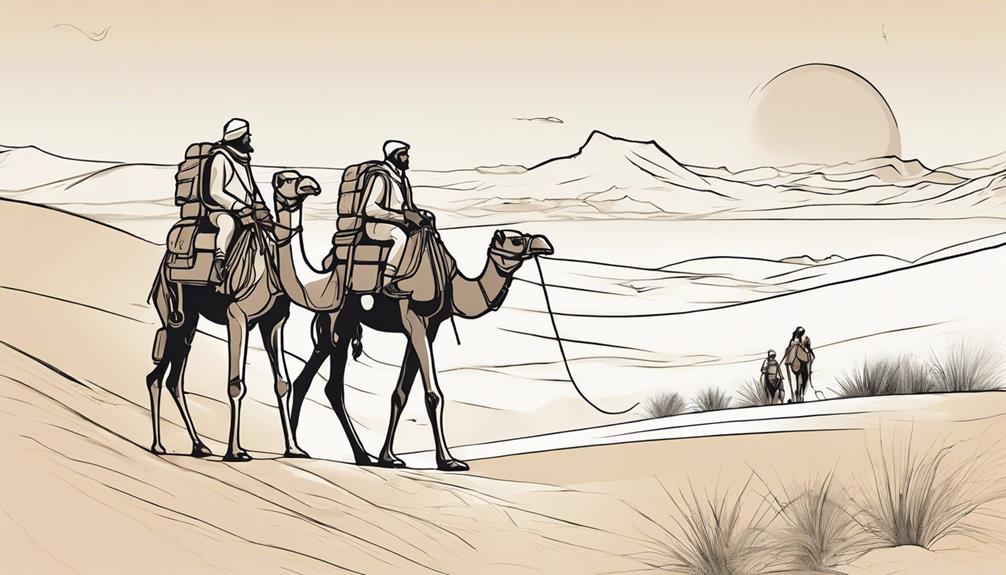
Animals have long served as reliable modes of transportation in exploration, offering unique advantages in traversing diverse landscapes. Examining the historical contributions of animals in exploration sheds light on their pivotal role in enabling humans to reach remote and challenging terrains. Investigating the modern applications of animal transport in exploration unveils innovative ways in which animals continue to support and enhance expeditions in various environments.
Animal Transport Benefits
Harnessing the enduring physical capabilities of select fauna has long been pivotal in expanding the horizons of exploration, particularly through facilitating efficient transportation across diverse terrains.
- Animals like horses, camels, and sled dogs excel in endurance and agility, enabling exploration across various terrains.
- Sled dogs are essential in polar regions for their agility in snow and ice, aiding in covering long distances efficiently.
- Camels are valuable in desert exploration due to their endurance in extreme heat and ability to carry heavy loads.
- Horses provide speed and agility, making them crucial for traversing mountains, forests, and plains during exploration.
- Utilizing animals for transportation in exploration fosters sustainable and adaptable travel methods, reducing reliance on mechanical vehicles in challenging environments.
Historical Exploration Contributions
Exploration throughout history has been significantly enriched by the invaluable contributions of animals, particularly in the realm of transportation, where their endurance and adaptability have played a pivotal role in advancing scientific endeavors. Early space travelers, including dogs, monkeys, and mice, paved the way for human space exploration. Laika, the first animal to orbit Earth, provided valuable insights for future space missions. Fruit flies, spiders, and frogs were used in space experiments to study biological responses to microgravity. Tortoises, dogs, cats, chimpanzees, and spiders were among the animals involved in space missions, expanding scientific knowledge and aiding in understanding the effects of space travel on living organisms. These historical explorations with animals have provided crucial scientific insights for the progression of space exploration.
Modern Use Cases
In what ways do animals continue to serve as indispensable assets for modern exploration efforts, particularly in the realm of transportation across challenging terrains and environments? Animals play a crucial role in modern exploration, aiding researchers in reaching remote locations efficiently. Utilizing animals for transportation offers several advantages:
- Sled Dogs: Huskies are essential for polar expeditions, pulling sleds across snow and ice for long distances.
- Reindeer: Vital for Arctic explorations, providing transportation for supplies in harsh, icy environments.
- Elephants: Employed in jungle exploration due to their strength and agility, carrying heavy loads and navigating dense vegetation.
- Llamas and Pack Mules: Used in mountainous regions for their sure-footedness, carrying gear and supplies during exploration missions.
- Horses, Camels: Historically and presently utilized for their endurance in traversing rugged terrains.
Animals Aiding in Search and Rescue Missions
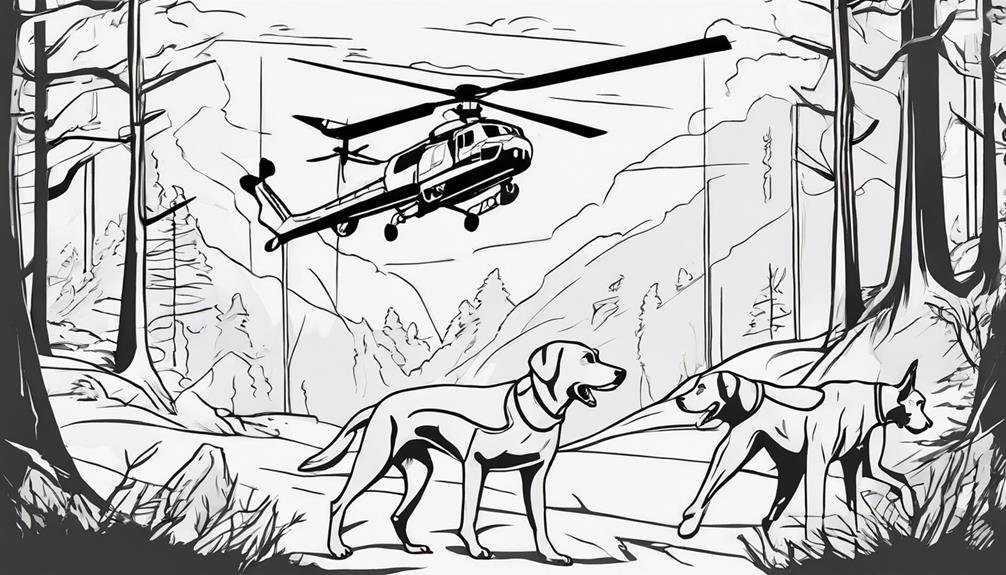
Utilizing the inherent abilities of various animal species in search and rescue missions enhances the efficiency and effectiveness of locating and aiding individuals in distress. Trained search and rescue dogs play a crucial role in locating missing persons, utilizing their exceptional olfactory senses to track individuals in diverse terrains and conditions. Birds such as falcons and vultures contribute to search operations by covering vast areas swiftly and spotting individuals from aerial vantage points.
In aquatic environments, dolphins and sea lions are valuable assets in water search and rescue missions, leveraging their natural swimming abilities to locate and assist drowning victims efficiently. Elephants and horses have proven instrumental in search and rescue efforts during natural disasters, offering access to hard-to-reach areas and aiding in transportation support for both rescuers and victims. These animals provide unique capabilities that complement human efforts, increasing the overall success rates of search and rescue operations.
Animals Detecting Hazards During Exploration
Animals equipped with exceptional sensory capabilities play a vital role in detecting various hazards, including explosives, chemicals, and landmines, during exploration missions. These animals, such as dogs, rats, and bees, leverage their keen sense of smell and ability to navigate challenging terrains to identify hidden dangers effectively. Here are some ways in which these animals contribute to hazard detection during exploration:
- Dogs: Trained to locate survivors in disaster zones, aiding search and rescue efforts in remote or inaccessible areas.
- Bees: Utilized in environmental monitoring to detect pollutants, toxins, and changes in air quality, providing early warnings for potential risks.
- Rats: Employed in identifying landmines by detecting their scent, reducing the risk of injury to humans in minefield clearance operations.
- Keen Sense of Smell: Animals use their heightened olfactory senses to detect hazardous substances that may be undetectable by technological means.
- Navigational Skills: Animals can access hard-to-reach areas, enhancing exploration missions' effectiveness in identifying and mitigating hazards.
Animals Guiding Explorers in Unfamiliar Terrain
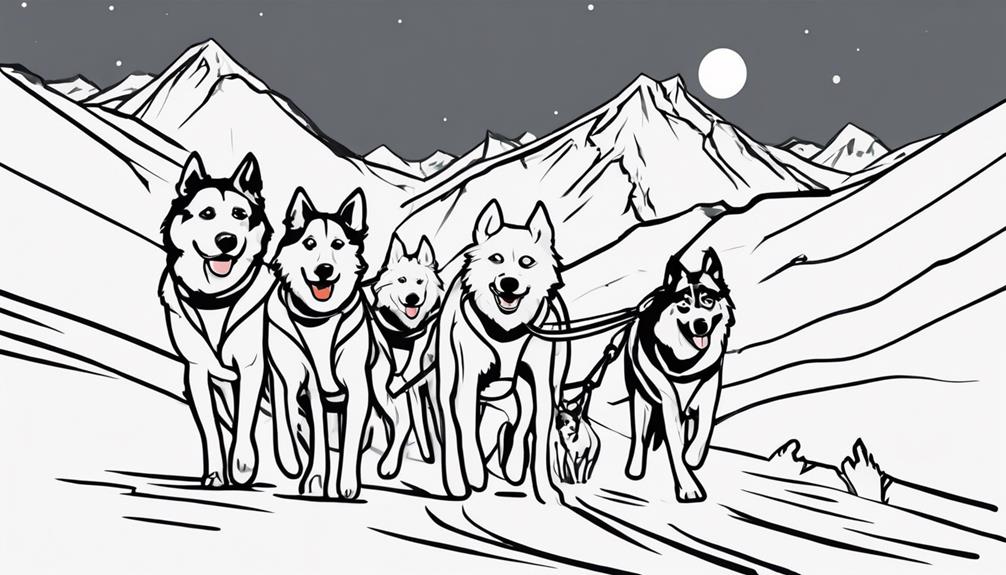
Animals guiding explorers in unfamiliar terrain offer a unique perspective on navigation through scent, utilizing their heightened senses to lead through challenging landscapes. In dangerous areas, these animals provide a sense of safety, alerting explorers to potential threats and hazards that may be overlooked. Additionally, their ability to communicate with local wildlife can offer valuable insights into the environment, aiding explorers in understanding and adapting to unfamiliar territories.
Navigation Through Scent
In the realm of exploration, the guidance provided by olfactory adept companions proves invaluable in maneuvering through unfamiliar terrains. Dogs, with their exceptional sense of smell, play a vital role in aiding explorers in navigating through diverse environments. Here are some key points to consider:
- Search and rescue dogs can track scents over long distances and challenging landscapes.
- Canines trained in scent detection assist in locating missing persons during disasters or wilderness expeditions.
- Dogs help search and rescue teams by guiding them to survivors or missing individuals in remote areas.
- Olfactory abilities enable animals to follow scent markers or trails, especially in areas where visual cues are limited.
- The reliance on animals for navigation through scent showcases the significant impact they have in aiding explorers.
Safety in Dangerous Areas
Guiding explorers through hazardous and unfamiliar terrains, various animal species have long served as invaluable companions, leveraging their unique abilities to ensure the safety and success of expeditions. Dogs, with their acute sense of smell and loyalty, play a crucial role in search and rescue missions, navigating treacherous environments with precision. Horses and camels excel in transporting explorers across challenging landscapes, providing stability and speed in areas inaccessible by other means. In dense forests, elephants are utilized for their strength and agility, forging paths for exploration. For aerial reconnaissance, trained birds like falcons and pigeons assist in mapping out unknown territories from above. Marine animals such as dolphins and sea lions contribute to underwater exploration by detecting hazards, locating objects, and aiding divers in dangerous conditions.
Communication With Locals
Explorers embarking on journeys through unfamiliar terrains often rely on the subtle cues and guidance provided by local animal companions to navigate safely and effectively. These indigenous guides offer invaluable support in various ways:
- Sled dogs: Assist in polar regions for navigation and transportation.
- Reindeer, horses, and camels: Utilized by indigenous peoples to navigate unfamiliar terrains and locate resources.
- Canines: Trained as search and rescue animals, aiding in finding missing persons in challenging terrains.
- Marine mammals: Such as dolphins and sea lions, used for underwater exploration to help divers locate objects and navigate underwater environments.
- Birds: Carrier pigeons have historically aided in communication and navigation by delivering messages across long distances in remote areas.
Communication With Animals for Exploration Purposes
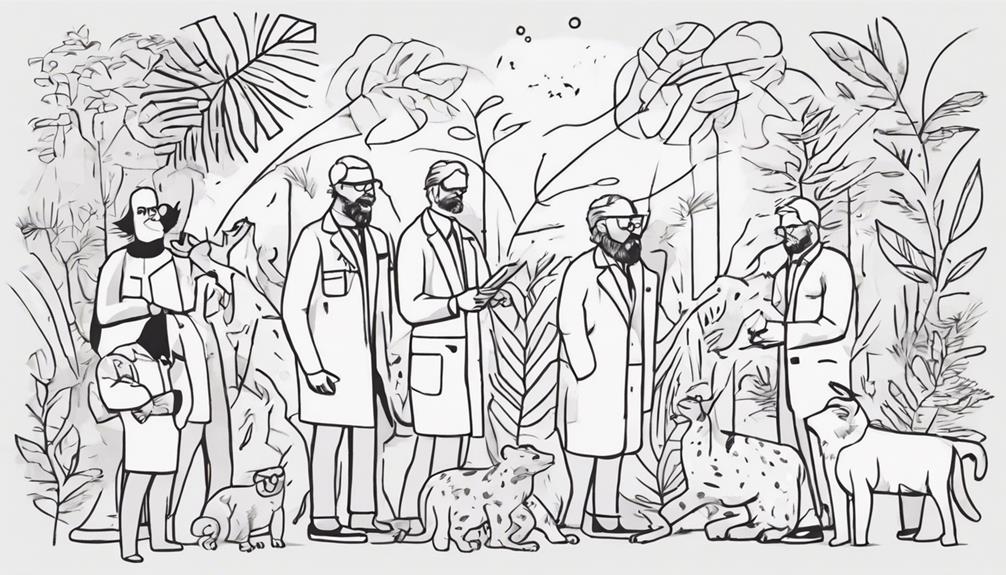
Utilizing animals as communication agents in exploration missions presents a unique opportunity to leverage their innate abilities for enhancing information relay in challenging environments. Animals can be trained to communicate with humans through signals, cues, and responses, making them valuable assets in exploration endeavors. In underwater exploration, species like dogs, dolphins, and seals have been employed to relay vital information back to human divers. Their natural affinity for water and ability to understand and respond to commands make them particularly effective in such environments. Birds, such as pigeons, have been trained to carry messages or sensors for aerial reconnaissance, expanding the scope of exploration missions. Additionally, primates like monkeys and apes have demonstrated the capacity to learn sign language or symbols, enabling them to convey crucial information in research and exploration settings. By tapping into animals' instincts and abilities, communication in challenging exploration scenarios can be significantly enhanced.
| Animal | Communication Method |
|---|---|
| Dogs | Signals and responses |
| Dolphins | Underwater communication |
| Seals | Relaying information to human divers |
| Birds | Carrying messages or sensors for reconnaissance |
Animals as Emotional Support for Explorers
In the realm of exploration, the presence of animals as sources of emotional support introduces a crucial dimension to the well-being and resilience of individuals navigating isolated and demanding environments. Animals play a pivotal role in providing emotional support to explorers, particularly evident in scenarios such as long-duration space missions where astronauts face unique challenges to their mental health and well-being. Here are some key ways animals contribute to the emotional support of explorers:
- Animals can reduce stress, loneliness, and anxiety for astronauts on extended space missions.
- Interactions with animals have been shown to boost morale, mental health, and overall well-being of space travelers.
- Pets like dogs or fish can create a sense of normalcy and connection to Earth, helping astronauts feel grounded despite the vastness of space.
- Studies indicate that animals in space can enhance crew cohesion, fostering a sense of unity and support among team members.
- Having animals around can improve the psychological resilience of individuals during exploration missions, aiding in coping with the challenges of the unknown.
Tracking and Scouting Capabilities of Animals
Trained animals, possessing remarkable sensory abilities and agility, play a vital role in assisting tracking and scouting missions. Dogs, with their exceptional olfactory senses, are valuable assets in tracking operations, capable of following scents across diverse landscapes. In search and rescue scenarios, dogs cover vast terrains swiftly, aiding in locating missing individuals or survivors efficiently. Birds like falcons and hawks, renowned for their acute vision, have historically been employed in scouting missions, spotting prey from great distances. These animals not only enhance tracking capabilities but also provide unique environmental awareness, complementing technological tools in exploration efforts.
Furthermore, animals contribute to search and rescue operations by navigating terrains that may be challenging for humans or machinery. Their natural instincts and sensory prowess enable them to detect subtle cues that might go unnoticed otherwise. By leveraging the innate abilities of animals, exploration teams can broaden their reach, improve efficiency, and gain valuable insights into the environment. The collaboration between animals and humans in tracking and scouting tasks exemplifies a harmonious synergy that enhances exploration endeavors.
Future Prospects of Animals in Exploration
Considering the expanding horizons of exploration, the integration of animals into future endeavors presents intriguing possibilities for enhancing our understanding and capabilities in extraterrestrial environments. The future space exploration holds great promise for leveraging animals in various ways, including:
- Lunar Hatch Programme: The exploration of utilizing fish eggs and potentially establishing fish farming for lunar residents.
- Sustainable Food Solutions: Insects like crickets and silkworm pupae are being considered for lunar farms to enhance sustainable food solutions.
- Closed-Loop Systems: ESAs Melissa program is developing closed-loop systems to sustain lunar food production with animals.
- Animal Companionship: Recognizing the importance of animal companionship for astronauts on long-duration space missions.
- Ethical Treatment: Ensuring the ethical treatment of animals in space exploration missions to uphold standards of care and respect.
These initiatives signify a shift towards creating more self-sufficient and holistic systems in space exploration, where animals play a crucial role in supporting human endeavors beyond Earth.
Frequently Asked Questions
How Have Animals Helped in Space Exploration?
Animals have played a crucial role in space missions by aiding in the study of animal behavior in zero gravity, acting as astronaut companions, and providing invaluable insights into biological experiments. Their presence has led to research benefits, improved training techniques, and a better understanding of space challenges. By involving animals in space exploration, scientists have been able to conduct innovative experiments that help unravel the complexities of life in a gravity-free environment.
How Do Animals Help Scientists?
Animals play a pivotal role in aiding scientists through wildlife tracking, research assistance, rescue missions, detection abilities, conservation efforts, behavioral studies, and navigation aid. By working closely with animals, researchers gain valuable insights into various fields, allowing for a deeper understanding of ecosystems, behavior patterns, and the natural world. This symbiotic relationship between humans and animals continues to advance scientific knowledge and shape our understanding of the world around us.
How Do Animals Help Us in Many Ways?
Animals aid us in numerous ways through their remarkable abilities. From assisting in search missions with their tracking scents to contributing to rescue operations with their detection skills, animals play a vital role in various fields. Their keen senses are invaluable in conducting environmental surveys, providing navigation aid, and enhancing security patrols. The diverse ways in which animals support us highlight the importance of recognizing and harnessing their capabilities for the benefit of society.
Why Did NASA Put Animals in Space?
NASA put animals in space primarily to study biological responses to space conditions. By observing animal behavior and physiological changes in space, researchers gained valuable insights for astronaut training and safety. Additionally, these scientific experiments provided crucial data for space research and technology development. While the historical context of using animals in space exploration raises ethical considerations, the contributions from these experiments have been essential for advancing our understanding of space travel.
Conclusion
In conclusion, the role of animals in exploration is multifaceted and essential. From providing navigational assistance to emotional support, animals have been invaluable companions in our quest for discovery. As we look towards the future of exploration, the potential for animals to continue aiding us in new and innovative ways is vast. Their unique abilities and contributions will undoubtedly play a crucial role in shaping the success of future exploratory missions.
